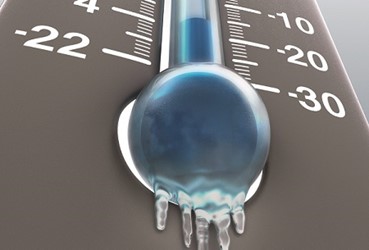Extreme Biobanking
By Sheri Gimigliano, MS & Debra Barnes, Ph.D.

Opening a door and walking into the equivalent of Antarctica takes preparation. Scientists studying climate can use instruments to measure extremely cold temperatures: NASA documented the lowest temperature on record, -93.2°C, in 2010 from a high ridge on the East Arctic ice sheet, using satellite data. But what if instruments won’t do the job? What if your employees have to work in such an environment?
Research biospecimens are commonly stored at -80°C, but this usually occurs inside mechanical reach-in freezers that result in minor, transient exposure of workers to the extreme cold. However, if the freezer is the size of a large room, then employees must be specially equipped and protected. How do you protect workers handling research materials in an environment that has to be maintained at a temperature that is typical of winter in Antarctica? The first step is to team with an organization that is already expert in safely managing materials at ultra-low temperatures.
Get unlimited access to:
Enter your credentials below to log in. Not yet a member of Bioprocess Online? Subscribe today.
